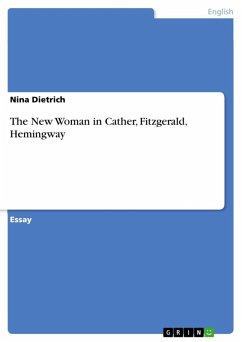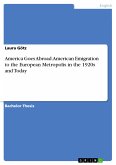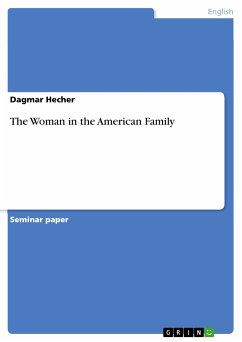Essay from the year 2003 in the subject American Studies - Literature, grade: 1.0 (A), University of Kent (School of English), course: American Modernism, language: English, abstract: The New Woman came into existence in the second half of the nineteenth century, but remained nameless until 1894, when Ouida and Sarah Grand used the term for the first time in two North American Review articles. Today, the New Woman is generally seen as the manifestation of changing gender norms at the fin de siècle. Critics such as Sally Ledger and Caroll Smith-Rosenberg differentiate between 'first and second- generation New Women: the first living and writing in the 1880s and 1890s, the second in the 1920s and 1930s' (Ledger 1). As this quotation shows, the label is mostly applied to female authors. However, it can also be used to describe fictional characters such as Lena Lingard in Willa Cather's novel My Ántonia, Jordan Baker in Fitzgerald's The Great Gatsby, and Lady Brett Ashley in 'Fiesta' (The Sun Also Rises) by Ernest Hemingway. This essay will, first of all, explain what was 'new' about women in the late nineteenth and early twentieth century and thus attempt to define the term New Woman. It will determine a number of characteristics that are considered typical of the New Woman in fiction, and use these as criteria to examine whether the characters mentioned above can be called New Women. Finally, the essay will compare the manner in which Cather, Fitzgerald and Hemingway present the characters. To begin with, the New Woman can generally be seen as a challenge to conventional gender roles. There are three main areas in which the New Woman differs from her predecessors: lifestyle, work and sexuality. That is, her attitude towards these topics bears little or no resemblance to the attitude of the early nineteenth-century woman.
Dieser Download kann aus rechtlichen Gründen nur mit Rechnungsadresse in A, B, BG, CY, CZ, D, DK, EW, E, FIN, F, GR, HR, H, IRL, I, LT, L, LR, M, NL, PL, P, R, S, SLO, SK ausgeliefert werden.








